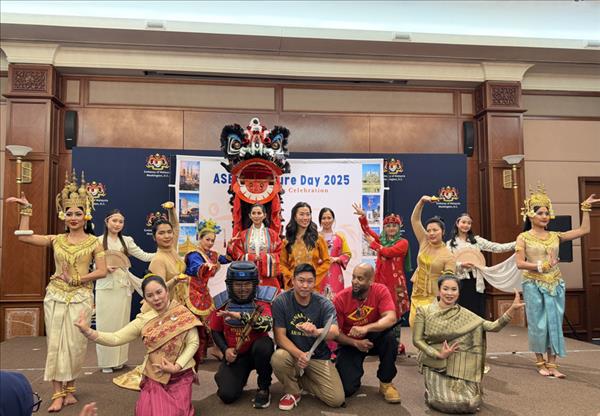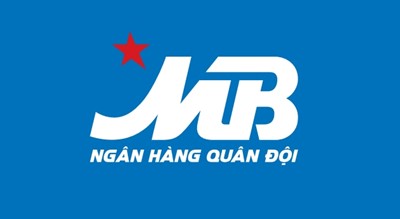Vietnam’s Tet (Lunar New Year) celebrations have been passed down through generations as families across the nation maintain centuries-old customs that mark the country’s most important annual holiday.
Family reunion
Vietnamese families gather during Tet holiday, believing it is a time when ancestral spirits unite with the living family under one roof. The New Year’s Eve dinner holds special significance as families invite their ancestors’ spirits to join the celebration.
Kitchen Gods’ farewell
As the legend goes, Ong Cong (Land Genie) is the one in charge of land while Ong Tao (Kitchen Gods), consisting of two males and one female, are those who keep a watch over the family kitchen. They take note of a family’s issues in a year and will ride carp fish back to the Heaven on the 23rd day of the last lunar month to report all the good and bad things of that family to the God of Heaven. This ritual involves kitchen cleaning, votive paper offerings, and red carps which are later released into waterways as part of the sacred tradition.
Making traditional glutinous rice cakes
Banh chung (square glutinous rice cake) and banh tet (round glutinous rice cake) are indispensable Tet dishes. Families and neighbours are brought together in a time-honoured tradition – the making of chung or tet cakes that often lasts through the night.
Northern families craft banh chung while southern households prepare banh tet, each serving as meaningful gifts for relatives and friends.
Home decorations with flowers
The celebration takes on distinct regional characteristics through floral decorations. Northern homes come alive with peach blossoms while southern ones glow with yellow apricot flowers. Besides, Vietnamese people also decorate their houses and offices with kumquat trees on the occasion. Kumquat trees are believed to symbolise the prosperity if the small tree is laden with fruit.
Many other types of flowers such as daisies, orchids, and gerberas are also popular adornments on this occasion.
Five-fruit tray
Arranging a five-fruit tray during the Lunar New Year celebration is a long-standing tradition in Vietnam. Each region curates its unique five-fruit tray arrangement, placing it prominently on ancestral altars. This tradition represents deep respect for ancestors and embodies hopes for prosperity in the coming year.
Pre-Tet purification: Cleansing home
Families engage in thorough house cleaning to dispel any lingering misfortune from the old year.
Visits to ancestral graves
Vietnamese families often visit their ancestors’ tombs and clean grave sites whenever the Lunar New Year (Tet) comes, normally from the 23rd of the last month of a lunar year to New Year’s Eve. Family members uproot weeds, tend to the flowers growing on ancestors’ grave sites, and clean the grave stones. The Vietnamese people believe everything, including the deceased’s tombs, should be clean and bright in celebration of Tet in order to have good luck in the New Year. Many consider the tomb-sweeping day a chance not only for family reunion but also for children and grandchildren to fulfill their duties and show respect to parents and ancestors.
“Tat nien” – a farewell to old year
“Tat nien” is a traditional practice of Vietnamese people in the last day of a lunar year, during which Vietnamese families gather for a meal, look back on the past year and get themselves ready for a new year. For the Vietnamese people, the “Tat Nien” meal is an important occasion for all family members to reunite and foster connections among generations after a busy year with their own business.
Giao thua (Lunar New Year’s Eve)
The stroke of midnight ushers in spectacular celebrations featuring fireworks, temple visits, and the gathering of lucky branches. “Giao thua” is also the time for Ong Tao to return to the earth after making the report to the God of Heaven. Every single family should offer an open-air ceremony to welcome the gods back to their kitchen.
Visiting pagodas during Tet
Traditionally, during the first three days of the Lunar New Year, Vietnamese families go to pagodas and temples to pray for good health, happiness and good fortune for the year ahead. Offerings, including flowers, incense and fruit, are given to wish for a successful year for friends and relatives.
“Xong dat” – a cherished Tet tradition
Passing down through generations and continued with equal enthusiasm today, “Xong Dat” (first footing), a Tet tradition in Vietnam, has always been associated with hopes for a fruitful year ahead. According to the tradition, the first guest to enter the house after midnight on the Lunar New Year’s Eve is believed to have a bearing on the family’s fortune throughout the year.
Many families ask a close friend or relative to carry out this New Year mission. To ensure good luck for the house, the selected “first foot” is normally required to have zodiac signs compatible with the host. He or she should also be successful and content with life.
Tet greetings and lucky money giveaway
Giving away lucky money is a traditional Lunar New Year (Tet) custom through which Vietnamese people exchange the best wishes with one another, hoping for a year of peace and good luck. The lucky money giveaway is a long-standing practice that represents “Mung Tuoi” or “Li Xi”, literally meaning “congratulations on a new age”.
Making first journey
After the first day of Tet, families carefully select favourable dates and directions for their first journey of the year, known as "Xuat Hanh." This traditional practice reflects the deep-rooted belief that the initial outing can influence success in business, work, and academic pursuits throughout the coming year./.


















